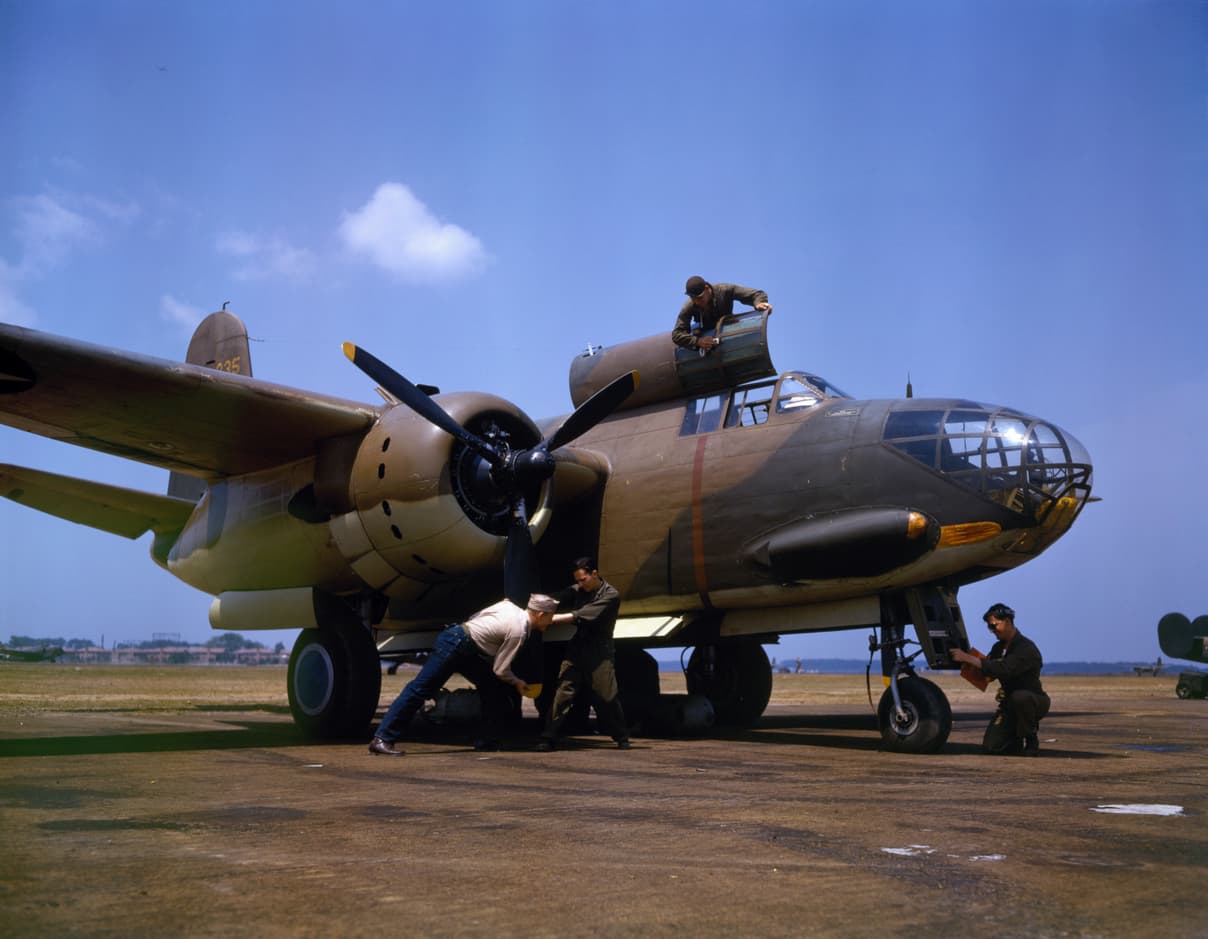History
In an effort to improve and standardize the early A-20 design based on wartime operational feedback, the A-20C was developed as a follow-up to the A-20A and DB-7B. This variant combined features from both the British and American versions, incorporating significant enhancements such as self-sealing fuel tanks, additional armor protection, an upgraded powerplant, and increased defensive armament. It also featured distinctive teardrop-shaped blisters on the nose and reverted to the slanted, diagonal glass nose of the A-20A, moving away from the stepped nose glazing found on the A-20B.
Due to the added armor and equipment, the A-20C was slightly heavier and marginally slower than the A-20A at comparable altitudes. However, top speed was not the primary concern since survivability in combat had become the priority, and the added protection proved far more valuable according to field reports.
The A-20C differed from its Lend-Lease counterpart, the Boston IIIA, mainly in armament and exhaust configuration. The American A-20C retained .30 caliber machine guns and used individual exhaust stacks, whereas the British version adopted the exhaust collector ring and other modifications suited to RAF standards. Both versions were powered by 1,600 hp Wright R-2600-23 radial engines.
Production of the A-20C was split between Douglas’s Santa Monica plant, which built 808 units, and Boeing’s Plant 2 in Seattle, which produced 140 examples intended primarily for Lend-Lease use. A large portion of the British order was redirected to the Soviet Union, while some were retained by the US Army Air Forces after the attack on Pearl Harbor. Of the first 515 A-20Cs built, 108 were retained by the AAF, and 407 were shipped to the USSR. Of the final batch of 433 aircraft, 200 were delivered to the British Commonwealth, 148 to the Soviets, and 85 to the USAAF. The first A-20C was accepted by the US government on December 19, 1941, and the last was delivered by February 1943.
After Pearl Harbor, many A-20Cs assigned to the USAAF were used for training and testing, though some were sent to combat theaters. The Fifth Air Force employed A-20Cs in the Pacific, while others served in the North African and Mediterranean campaigns.
The A-20C was also the first Havoc variant to be produced using the new Block Number and Factory Designation systems. These included:
-
A-20C-1-DO: Standard baseline production model.
-
A-20C-5-DO: Added provisions for towing targets and torpedoes, introduced wing-flap synchronization for intermediate settings, an electric gunsight, and a bulletproof windshield.
-
A-20C-10-DO: Same as the -5 block, but included the SCR-274 radio command set for improved communication capabilities.









